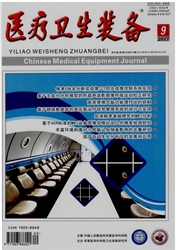

 中文摘要:
中文摘要:
目的:立体定向神经外科手术中,丘脑及其子结构神经核团作为靶区,常被用于治疗癫痫和锥体外系疾病。利用计算机对丘脑神经核团进行分割,对于神经外科疾病的诊断与治疗具有重要的研究价值。为提高丘脑神经核团的分割精度,简化人工操作,减少人工干预,避免主观影响,本文提出一种结合置信连接度的自适应模糊连接度混合算法,用于分割丘脑结构。方法本文算法在基于模糊连接度的框架内增加图像梯度特征,采用自适应权重及自动选取感兴趣区域的方式,对10例人脑MRI图像数据的丘脑结构进行分割。结果实验结果与专家指导下的手工分割结果进行比较,并对两者之间的相似度进行量化比较。结果表明该算法在减少人工干预的同时保证了较高的准确率。结论结合置信连接度的自适应模糊连接度丘脑及其子结构分割算法在计算速度和精度上均优于传统模糊连接度算法。
 英文摘要:
英文摘要:
Objective In stereotactic neurosurgeries ,the thalamus and its substructure nerve nuclei have been regarded as the target areas , which can be usually used to treat epilepsy and extrapyramidal diseases .The utilization of computers for the segmentation of thalamus nerve nuclei has significant value of research in the diagnosis and treatment of neurosurgical diseases . In this paper , an algorithm based on adaptive fuzzy connectedness combined with confidence connectedness is proposed to improve the accuracy of thalamus segmentation result , simplify manual operation , reduce human intervention and avoid subjective influence . Methods This method gains the image gradient feature in the original framework based on the theory of fuzzy connectedness .Adaptive weighting and the way of automatically selecting interested area can reduce manual intervention.The thalamus structures of 10 cases of human brain MRI image data are segmented .Results The experimental results are compared with the results of the manual segmentation guided by experts .The similarity degree of them is calculated for quantitative comparison .The accuracy of this algorithm is higher , with human intervention reduced .Conclusions The adaptive fuzzy connectedness combined with confidence connectedness algorithm is better than traditional theory of fuzzy connectedness in computation speed and accuracy .
 同期刊论文项目
同期刊论文项目
 同项目期刊论文
同项目期刊论文
 期刊信息
期刊信息
